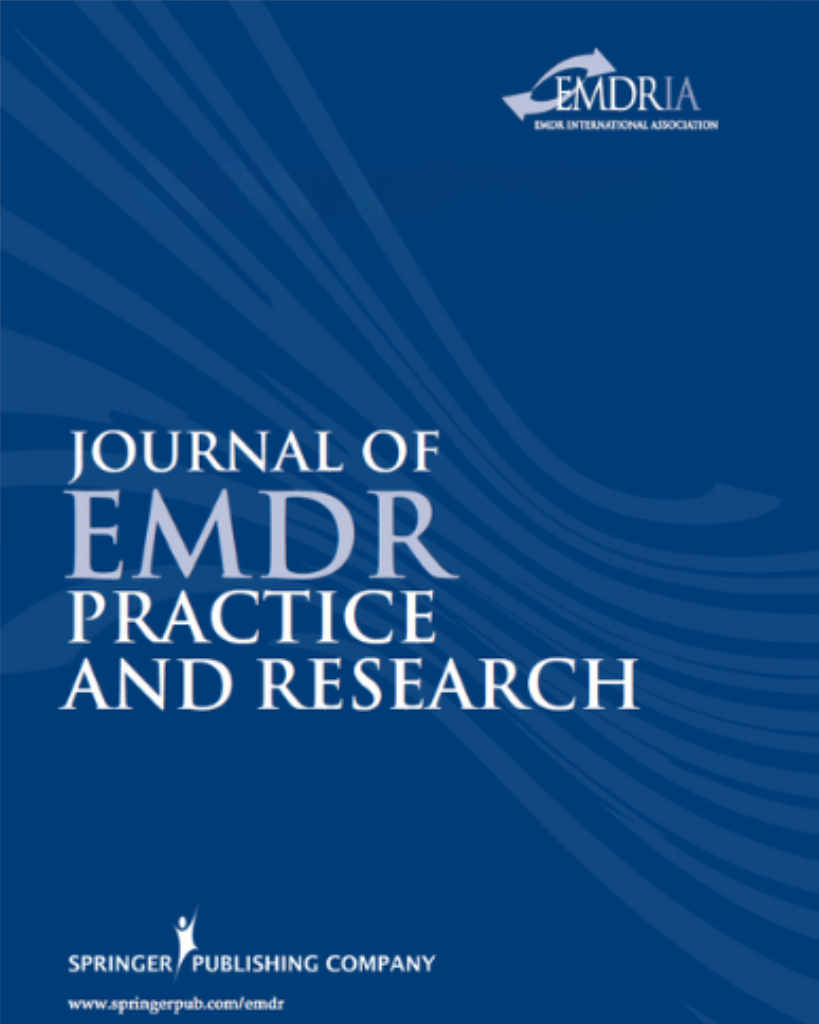The Effects of Bilateral Eye Movements on EEG Coherence When Recalling a Pleasant Memory
Participants were exposed to bilateral eye movements during the contemplation of a positive memory and measured with electroencephalographies.
Article Abstract
“In an investigation of the interhemispheric coherence (IhC) model for eye movement desensitization and reprocessing (EMDR) bilateral eye movement (BEM) effects, 30 participants were exposed to a stationary dot, a blinking red/green dot, or saccadic BEMs during the contemplation of a positive emotional memory. Electroencephalographies (EEGs) were measured afterward during an eyes-closed processing stage. Analyses revealed no significant IhC enhancement for the BEM condition but significant increases in Delta and Low Beta EEG intrahemispheric BEM coherence in the right and left frontal areas, respectively, and a trend increase in Right Frontal Low Beta BEM coherence. LORETA neuroimaging was employed to visually present significant amplitude changes corresponding to observed coherence effects. The functional significance of these intrahemispheric coherence effects is presented and a cortical coherence extension of the IhC model is suggested.”
—Description from publisher
Article Access
Open Access
Keller, B., Stevens, L., Lui, C., Murray, J., & Yaggie, M. (2014). The Effects of Bilateral Eye Movements on EEG Coherence When Recalling a Pleasant Memory. Journal of EMDR Practice and Research, 8(3), 113–128. https://doi.org/10.1891/1933-3196.8.3.113
About the Journal
The Journal of EMDR Practice and Research is a peer-reviewed publication devoted to integrative, state-of-the-art papers about Eye Movement Desensitization and Reprocessing. It is a broadly conceived interdisciplinary journal that stimulates and communicates research and theory about EMDR, and their application to clinical practice. The Journal of EMDR Practice and Research is the Official Publication of the EMDR International Association.
Date
September 1, 2014
Creator(s)
Brandon Keller, Larry Stevens, Colleen Lui
Contributor(s)
James Murray, Matthew Yaggie
Practice & Methods
BLS
Extent
16 pages
Publisher
Springer Publishing Company
Rights
Copyright © 2014 EMDR International Association
APA Citation
Keller, B., Stevens, L., Lui, C., Murray, J., & Yaggie, M. (2014). The Effects of Bilateral Eye Movements on EEG Coherence When Recalling a Pleasant Memory. Journal of EMDR Practice and Research, 8(3), 113–128. https://doi.org/10.1891/1933-3196.8.3.113
Series
8
Installment
3
Audience
EMDR Therapists
Language
English
Content Type
Peer-Reviewed
Original Source
Journal of EMDR Practice and Research
Access Type
Open Access



